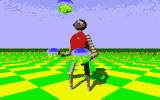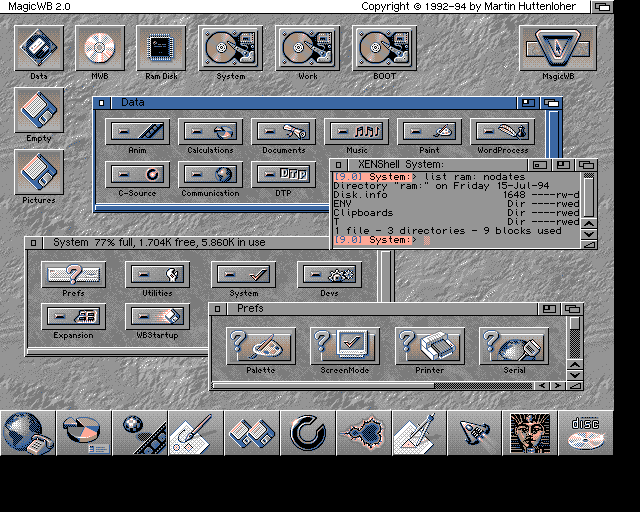Retrohomage: Amiga 1000
It’s funny what you remember. I remember seeing the Juggler for the first time in the windows of Tandy’s, in th e Coventry precinct. Yes, it’s that small animation running in this article. Yes, it’s 12 frames. Yes, the resolution was 320×200. Put in context as seen by a young lad who had just watched Tron and been blown away, it was utterly intoxicating. As exposed in my 3D Roundup, you could see reflections of reflections in the balls… Proper ray tracing.
e Coventry precinct. Yes, it’s that small animation running in this article. Yes, it’s 12 frames. Yes, the resolution was 320×200. Put in context as seen by a young lad who had just watched Tron and been blown away, it was utterly intoxicating. As exposed in my 3D Roundup, you could see reflections of reflections in the balls… Proper ray tracing.
And then Robocity. And, of course, the boing ball… which could be dragged down to show magic multitasking happening!
There was no way on earth that an Amiga 1000 was affordable for my family in 1985, but that didn’t stop me devouring every piece of literature and information that I could find.
Any magazine mentioning the Amiga would get my pocket money. Any brochures left around in a computer shop would be devoured. Any chance to actually use the Amiga was taken. The Commodore Computer Fair at Novotel Hammersmith was attended, mostly for 64 stuff, but really to find out what was going on with the Amiga.
But back to what made the Amiga special. Arguably, it was the custom chips and arguably this could only ever have been delivered economically by a company with obsessive vertical integration that Commodore had back then. Their utter devotion to in-house control of their products has been adopted as modus operandi by Apple who, at the time, were not in the same league. I can only imagine the pain that buying in the 68000 processor must have caused to the company! But those custom chips brought magic to the Amiga: four channel sampled sound that took no processor time (Paula), graphics that likewise required little processor intervention (Denise), a blitter (block image transfer, or more accurately a block image manipulator in the Amiga) to copy, fill and draw lines rapidly, ‘copper’ coprocessor that could manipulate resolutions and graphic features on the fly (Agnus)…
And everything could be synced with an external video source, via a genlock. The Atari ST had its midi ports and became big in music, the Amiga had its genlock capability and became big in video.


